




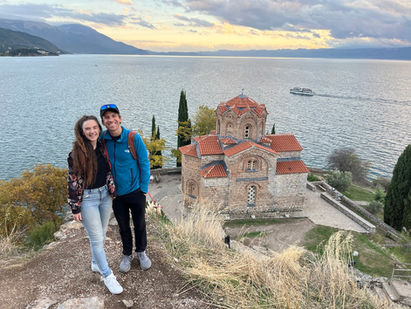
Aug 1512 min read

September in Croatia is always a good idea. We were craving late summer sunshine and relaxation, and with such fond memories of our time in Korčula in 2022, we decided to pause the Eastern European segment of our trip and fly to a familiar country but an unfamiliar island.
The travel day from Bratislava to Zadar was a total blur. We were both feeling quite unwell, likely from the traditional Slovakian meal we’d had, which in hindsight may not have been cooked thoroughly. The journey involved a long ride to Vienna Airport, a flight, and another bus ride into Zadar town. At the bus stop, a taxi driver approached us with an offer to match the bus fare, saving us an hour’s wait. Barely functioning due to how awful we felt, we took the risk. Thankfully, it wasn’t a scam, and we were incredibly relieved to arrive at our accommodation. Although we wanted to stay in bed, we knew fresh air would help after the long day of travel. We were just a short walk from the coastline, and resisted the temptation of the comfort of staying indoors. It felt amazing to be by the sea again, with turquoise waters, some locals swimming, and others walking their dogs. This is why we love Croatia in September. It offers a more relaxed, local vibe with the summer tourist crowds gone.






As we entered the old town, the atmosphere became more vibrant, with a hum of activity in the streets. Before long, we arrived at Zadar's famous sea organ, an attraction unlike anything we had experienced before. Although the organ itself is not visually striking, the magic lies in its sound. As waves pushed through the cleverly designed pipes beneath the marble steps, they created a soothing, almost otherworldly melody. The combination of the sea’s rhythm and the organ’s harmony was both calming and captivating, leaving us mesmerized as we sat and listened.
By this point, we realized we hadn’t eaten all day. Although neither of us felt up to much, we managed to share a slice of pizza, grateful for something small and simple to settle our stomachs before making our way back to our accommodation for the night. Thankfully, after a much-needed nine hours of sleep without interruption, we woke up feeling rested and significantly better. It was a relief to finally shake off the fatigue and start to feel like ourselves again.






The following day greeted us with clear blue skies, and the shift in weather immediately lifted our spirits. With high hopes for the day, we boarded a bus bound for Split. The journey itself was a treat as Croatia’s coastline unfolded before us, showcasing its breathtaking natural beauty. We arrived in Split around 10:30 a.m. and were ready to make the most of a perfect day. The city was buzzing with activity, partly due to the presence of two large cruise ships docked in the port, which brought a large influx of visitors to the historic center. After checking into our accommodation, we stopped at a local bakery for our first meal in 24 hours, savoring a delicious treat that felt well-deserved. From there, we wandered past the bustling port to a local beach.




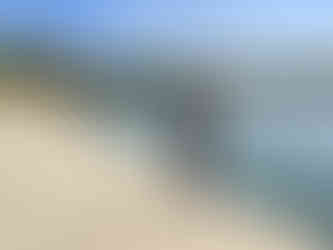

At the beach, Luke’s attention was captured by a group of older men playing what looked like handball, but with a twist. It turned out to be called "Picigin", a game unique to this part of Croatia. The players were impressively agile, diving and belly-flopping to keep the small ball from touching the water. Their dedication and energy gave the scene a wholesome, lively atmosphere, with families and locals enjoying the sun and sea.

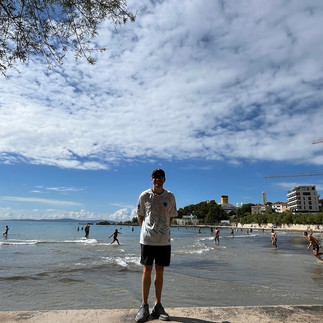




Later, we ventured briefly into the old town to see Diocletian’s Palace, a historic gem, but the crowds were overwhelming. Deciding to avoid the peak tourist rush, we made plans to return after sunset when the cruise ships had departed. Instead, we set off on a hike up the Marjan steps, winding through the forest park toward the quieter Kasjuni Beach, soaking in the tranquil surroundings and stunning views along the way.










Before deciding to visit Croatia, Jelley had a startling realisation - she had only worn her swimsuit once since leaving New Zealand a whole year ago! That single occasion had been a quick dip in the icy Baltic Sea while in Finland. This made her first swim in the warm Croatian ocean feel even more special. The turquoise-blue water was not only stunning but also incredibly refreshing, making it well worth the long wait. While waiting for a local bus to return to the centre, we met a friendly Kiwi / British couple of a similar age who had just popped over for a long weekend, and we shared the amazement at how it isn’t something you can just do in NZ and just how lucky we were to be here!
After enjoying sunset and dinner on the waterfront, we wandered through Split's old town, which had finally calmed down from the chaos of the cruise ship visits from earlier. The food in this part of the world is always so yummy and fresh. It's no wonder that the people of the Mediterranean have the lowest rates of heart disease in the world. On the walk home we did a little night walk through the old town to get a sense for it at night. It was really cool to meander through the various alleyways and shops. We even stumbled upon what looked like a little wedding celebration happening in the old town. Seeing this got us excited about our own wedding which is not long now!










We were interested in learning more about Split, so we signed up for our favourite activity of a walking tour the next morning.
Split Walking Tour Fun Facts:
The first settlers in the area, the Dalmatians, lived here 2,500 years ago (no Dalmatian dogs spotted!).
Romans conquered the region at the end of the 1st century, destroying much of it.
Diocletian, born here, ruled as Roman emperor from 284-305 AD and was the first emperor to retire.
He chose Split for his retirement, drawn by its sulphur springs and healing properties.
Diocletian’s palace covered 3,000 square meters, and he lived there for 10 years.
The palace was built from Croatian white limestone from Brač Island, using a mix of donkey hair and eggs instead of cement.
After Diocletian’s death, the palace remained uninhabited for 400 years.
Split was ruled by Hungarians, Venetians, and Austro-Hungarians at different times.
In the 20th century, Croatia was part of six different countries!
It was part of the Kingdom of Yugoslavia, then a Nazi-occupied state, followed by communist rule.
Croatia gained independence in 1991.
Croatia’s economy is largely tourism-driven, with 25% of GDP from this sector.
Key exports include wood, stone, fish, and groceries.
The name ‘Split’ has no specific meaning.
The seafront promenade was constructed in the 16th century by the Venetians.
Parts of Game of Thrones were filmed here (as with other parts of Croatia).
90% of Diocletian’s palace is now private apartments.
The palace was bombed by the Allies in World War II.










After a great time in Split, we headed to the nearby island of Brač, specifically the town of Bol, where we would spend the next four nights. We had planned a day trip to the popular island of Hvar, but Bol’s charm was so compelling, we ended up staying there the entire time! The weather forecast promised two sunny days and two rainy ones, which felt like a win after our wet and wild experience in the Tatra mountains.








We took the quick and easy ferry to Bol and settled into our cosy apartment. It was just a short 7-minute downhill walk to a beautiful swimming beach and 10 minutes from the village center. It had everything we needed, and we enjoyed the chance to fully unpack, cook meals together, stroll down to the beach every day, and have a comfortable home base for the week.
It truly was a piece of paradise here in Bol and we made sure we swam at least once a day every day! Jelley got a little excited running into a choppy swimming beach on the first night and stepped on a sea urchin, but that was the only slight hiccup in an our wonderful week.



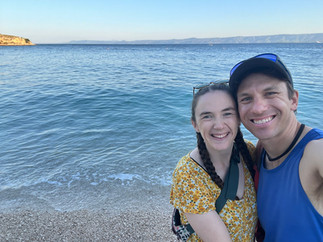




One of our favorite parts of Bol was the beautiful walk along the promenade that stretched from the town center to the famous Zlatni Rat beach. Lined with beautiful pine trees, the pathway made for a shaded and scenic walk, perfect for escaping the midday sun. Zlatni Rat (or Golden Horn) is often referred to as one of the most beautiful beaches in Croatia. It's renowned for its unique shape which looks golden from above, but it's actually a long, pebbled beach spit. We made several trips here for swimming and sunsets, soaking in the relaxed vibe. It was hard to believe that just a few weeks earlier, the beach had been crowded with day-trippers.












In the evenings, Bol’s tiny harbor came alive with a touch of glamour as many superyachts docked here for the night. It was fun to google the yachts, where they come from and their multi-million dollar price tags. Many of the passengers to docked here for the night made their way to the Stina Winery, a well-regarded local winery spot. Stina produces some exceptional wines, particularly their whites and rosés, using native Croatian grape varieties. We didn't ever get the chance to go, but it was neat to watch the harbour transform into a luxurious port for the evening.












We loved the relaxed holiday vibe on this island and it never felt busy. We’re a little guilty of being ‘active relaxers’ when travelling and not really taking any time to reset, and we had no regrets doing that this time! We did, however, plan to hike to Vidova Gora, the highest point on Brač and among all of Croatia’s islands. Our ambitious idea of starting at sunrise quickly gave way to the temptation of sleeping in. By the time we began the hike at 9 a.m., the sun was already blazing down on the exposed hillside. Jelley decided to sit this one out and return to the beach bar, but Luke pushed on to the summit. From the top, he enjoyed a fresh perspective of the island, including a breathtaking bird’s-eye view of Zlatni Rat and the surrounding Adriatic waters.






Although the forecast had predicted an overnight storm, the sky remained perfectly clear, giving no indication of the weather to come. However, nature surprised us, and we were jolted awake at 4 a.m. by the sounds of thunder and flashes of lightning. Just as suddenly as the storm arrived, it was gone, and by mid-morning, the skies were a brilliant blue once again.
Our journey from back began with an early morning ferry ride, shrouded in pre-dawn darkness. After a quick stop at our favourite bakery in Split, we caught a direct bus back to Zadar. Although it felt like backtracking, the flights from Zadar were significantly cheaper and more convenient for us, making the easy two-to-three-hour journey well worth it. This time, we stayed in a different part of Zadar, further up the coastline. We enjoyed a late lunch-early dinner at a restaurant that felt like an Australian surf club, complete with quirky shark decorations.

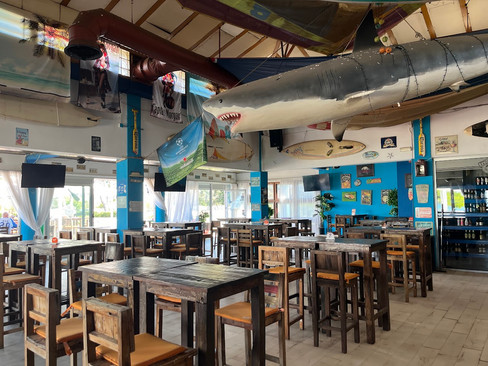


Before wrapping up our time in Croatia, Jelley took one last walk to the sea organ in the old town to watch the sunset in Zadar. Unlike before, the area was bustling with activity. A beautiful luxurious old sailing/cruising boat was docked near the town, while cruise ships lingered further out at sea, creating a picturesque scene.




As our time in Croatia came to an end, we felt incredibly grateful for the experiences we had. If we lived closer, we could easily imagine returning every year to explore a new Croatian island. For now, though, it was time to continue our travels. Next stop: Bulgaria, where we would reunite with some very special friends and embark on a new adventure in the Balkans.
Until then,

- A Kiwi and A Cali










